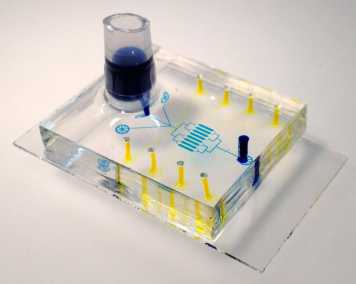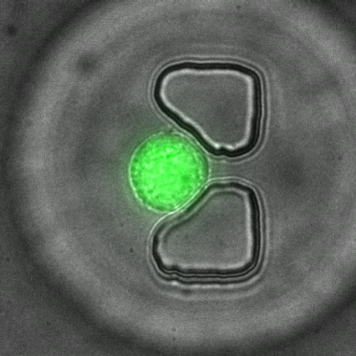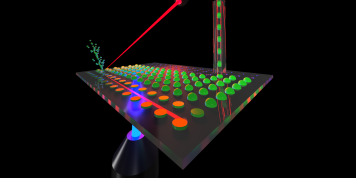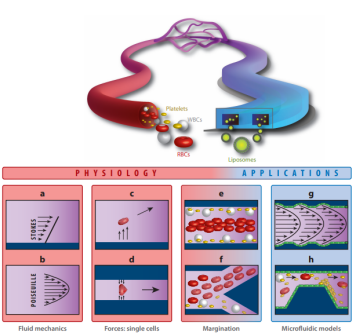Research
We develop a new generation of analytical instruments and methods for cell and membrane analysis using microsystems technology.
Microfluidics (Lab-on-chip Technology) for the Life Sciences
Microfluidics provides a huge toolbox for (bio)analytical and biological methods. Microfluidic platforms facilitate precise handling and positioning of cells, creating of chemically defined liquid environments, and tailoring mechanical or physical conditions. We develop miniaturized devices for analysis of cells and membranes, and for the creation of nanomaterials. In our interdisciplinary approach chemical, physical, biological and engineering aspects of microfluidic-based technology are combined.
Downscaling of Analytical Devices

For a short introduction into the concept of lab-on-chip technology including the most important benefits, follow the link.
Single-cell analysis

We analyze the response of single cells to chemical and mechanical stimuli by employing various methods for cell trapping, isolation and detection. More information.
Diagnostics
Extending our microanalytical assays to the point of care with portable assay readouts on mass-producible microfluidic chips. Read more.
Microarray & Droplet Screening Platforms

Leveraging the power of Microfluidics for high-throughput screening platforms. Read more.
Membrane and Artificial Cells
We use vesicles to reveal fundamental properties of lipid membranes. In addition, vesicles serve as the key building element for the creation of artificial cells. Examples are here.
Vessels-on-chip

In vitro vessel-on-chip platform to recipitulate biological complexity in a model system. Further reading.